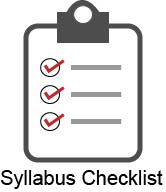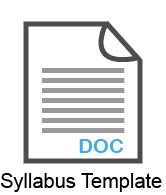Designing a Course Syllabus
At the most basic level, a course syllabus serves to communicate a road map for a course - both for the instructor and the students. It lays out the trajectory of topics, readings, assignments, activities and assessments for meeting the course objectives. In addition, it sets the tone for the semester, establishes class policies and procedures, and begins the process of establishing a learning community. Below, we have provided steps for syllabus design that take you one step beyond simple content organization and encourage reflection and investment in the tone you wish to set for your course.
We have crafted a Syllabus Checklist based on guidelines for essential and suggested content. The elements in the checklist are not all required, but will give you a sense of what comprises a comprehensive syllabus.
In addition, we have developed a Syllabus Template for your use. The template is designed to use in conjunction with the syllabus checklist. The text included within [brackets] should be replaced with your own relevant course content. Of course, a syllabus is a personal thing and we encourage you to add our own stamp - so adapt away! It is the first impression on your students for your course, so start off on the right foot! Keep in mind - some programs/departments have discipline specific requirements for their syllabi, so be sure to consult your department and find out if they have a template or set of guidelines you should use.
For information on developing an inclusive syllabus, please visit our resources on Inclusive Teaching.
An easy way to share your course syllabus with your students is to post a PDF version of it on Canvas. Please consult the Canvas Guides for more information on this step.
Do you have questions? We are happy to help! Supporting U instructors on syllabus construction and course design are among the CTLE Consultation Services we offer, so be in touch (info@ctle.utah.edu).


